-
2011 Oklahoma human-induced earthquake may have triggered larger quake
In a new study, scientists observed that a human-induced magnitude 5.0 earthquake near Prague, Oklahoma in November 2011 may have triggered the larger M5.7 earthquake less than a day later. This research suggests that the M5.7 quake was the largest human-caused earthquake associated with wastewater injection.
-
-
Accelerated urbanization exposes French cities to increased seismic risk
Old structures, designed before current seismic building codes, abound in France, and there is insufficient information about how they will respond during an earthquake. French researchers have looked into data mining to develop a method for extracting information on the vulnerability of cities in regions of moderate risk, creating a proxy for assessing the probable resilience of buildings and infrastructure despite incomplete seismic inventories of buildings. The research exposes significant vulnerability in regions that have experienced an “explosion of urbanization.”
-
-
Safeguarding networks when disasters strike
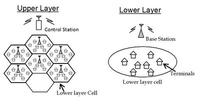
Disasters both natural and human-caused can damage or destroy data and communications networks. Several presentations at the 2014 OFC Conference and Exposition, being held 9-13 March in San Francisco, will present new information on strategies that can mitigate the impacts of these disasters. Researchers created an algorithm that keeps data safe by moving or copying the data from data centers in peril to more secure locations away from the disaster. The algorithm assesses the risks for damage and users’ demands on the network to determine, in real-time, which locations would provide the safest refuge from a disaster. Other researchers suggest that if fiber-optic cables are down, wireless communication can fill the void and be part of a temporary, emergency network. For such a system to work, however, wireless technology would have to be integrated with the fiber-optic network that transports data around the world.
-
-
Virtual lab for nuclear waste repository research
A nuclear waste repository must seal in radioactive waste safely for one million years. Researchers currently have to study repositories and their processes in real underground laboratories, but a virtual underground laboratory will soon simplify their work.
-
-
Energy Department suspends work on controversial plutonium reprocessing project
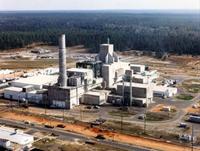
The Obama administration has decided to put on hold its plans to complete construction on a South Carolina reprocessing facility which would convert nuclear weapon-grade plutonium into reactor fuel. The suspension of work on the project is part of the fiscal 2015 budget plan the administration unveiled Tuesday. The project has been hobbled by delays and massive cost-overruns, and experts says security and safety concerns have not been adequately addressed.
-
-
Large shake tables expands capabilities of U Nevada, Reno’s quake engineering lab
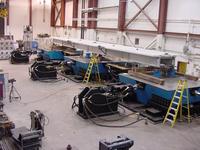
When it opens, the University of Nevada, Reno’s new Earthquake Engineering Laboratoryt will join with the internationally renowned Large-Scale Structures Laboratory to comprise the largest and most versatile structural engineering experimental facility in the United States. Researchers at the facility will conduct research aiming to test new designs and materials that will make buildings, bridges, and highways safer.
-
-
Experts call for a new organization to oversee grid’s cybersecurity

In 2013, U.S. critical infrastructure companies reported about 260 cyberattacks on their facilities to the federal government. Of these attacks, 59 percent occurred in the energy sector. A new report proposes that energy companies should create an industry-led organization to deflect cyber threats to the electric grid. Modeled after the nuclear industry’s Institute of Nuclear Power Operations, the proposed organization, to be called the Institute for Electric Grid Cybersecurity, would oversee all the energy industry players that could compromise the electric grid if they came under a cyberattack.
-
-
Operator set to close three Illinois nuclear power plants
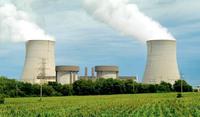
Abundant natural gas and growing reliance on solar and wind energy have been steadily eroding the profit margins of nuclear energy. Last year operators have shut down four nuclear plants in the United States last year. Exelon Corporation, which operates six nuclear plants in Illinois, has notified Illinois state regulators that legislative actions may be necessary to keep half of its Illinois nuclear plants from closing, since current market forces make it impossible to continue the operation of the plants profitably.
-
-
Flood risk in Europe could double by 2050
Losses from extreme floods in Europe could more than double by 2050 because of climate change and socioeconomic development. Floods in the European Union averaged 4.9 billion euros a year from 2000 to 2012. These average losses could increase to 23.5 billion euros by 2050. In addition, large events such as the 2013 European floods are likely to increase in frequency from an average of once every sixteen years to a probability of once every ten years by 2050. Understanding the risk posed by large-scale floods is of growing importance and will be a key for managing climate adaptation.
-
-
What use are apps when your web infrastructure is underwater?
This winter has seen unprecedented high winds and flooding resulting in widespread and in some cases, long-lasting power outages in the United Kingdom, particularly in the west of England. Time and time again, companies have advised their customers to go online to check their Web sites for the latest information. Some organizations have even created apps specifically designed to assist flood victims; others have established Facebook self-help groups. There is a fundamental problem here: There are two primary ways in which we gain access to the Web, via a landline and using a mobile connection. Within our homes the landline connects to a wireless router and also, for a lot of homes, a cordless telephone, both of which need electrical power to work. So, when the lights go out, your router and cordless phones are useless. The result is that at times of crisis, the customers in most need are often the ones with no access.
-
-
People want to save water, but do not know how
Many Americans are confused about the best ways to conserve water and have a slippery grasp on how much water different activities use, according to a national online survey. Experts say the best strategy for conserving water is to focus on efficiency improvements such as replacing toilets and retrofitting washing machines. The largest group of the participants, however, nearly 43 percent, cited taking shorter showers, which does save water but may not be the most effective action.
-
-
NIST’s voluntary cybersecurity framework may be regarded as de facto mandatory
The National Institute of Standards and Technology’s (NIST) voluntary cybersecurity frameworkissued in February establishes best practices for companies that support critical infrastructure such as banking and energy. Experts now warn that recommendations included in the framework may be used by courts, regulators, and even consumers to hold institutions accountable for failures that could have been prevented if the cybersecurity framework had been fully implemented by the respective institution.
-
-
Employees exposed to radiation at nuclear waste disposal site
Thirteen employees at the Waste Isolation Pilot Plant(WIPP),a nuclear waste burial site in New Mexico, have been exposed to radioactive radiation after a leak in one of WIPP’s underground tunnels. Energy Department officials say it is too soon to determine the scope of health risks the employees will deal with. The employees inhaled plutonium and americium, both of which can irradiate the body’s internal organs with subatomic particles for a lifetime.
-
-
Real-time forecast of Hurricane Sandy accurately predicted storm’s track, intensity
A real-time hurricane analysis and prediction system that effectively incorporates airborne Doppler radar information may accurately track the path, intensity, and wind force in a hurricane. This system also can identify the sources of forecast uncertainty.
-
-
Volcanic eruptions explain recent warming hiatus
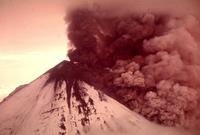
Volcanic eruptions in the early part of the twenty-first century have cooled the planet, according to a study led by Lawrence Livermore National Laboratory. This cooling has partly offset the warming produced by greenhouse gases, explaining why, despite continuing increases in atmospheric levels of greenhouse gases, and in the total heat content of the ocean, global-mean temperatures at the surface of the planet and in the troposphere (the lowest portion of the Earth’s atmosphere) have shown relatively little warming since 1998. Scientists note that human-induced – that is, greenhouse gasses emissions-related — change typically causes the troposphere to warm and the stratosphere to cool. In contrast, large volcanic eruptions cool the troposphere and warm the stratosphere.
-
More headlines
The long view
Helping Strengthen America’s Critical Infrastructure
Everyday life depends on a robust infrastructure network that provides access to running water, communications technology and electricity, among other basic necessities. The experts who keep our national infrastructure secure and resilient also need a strong network to share their knowledge and train the next generation of professionals capable of solving complex infrastructure challenges.
AI and the Future of the U.S. Electric Grid
Despite its age, the U.S. electric grid remains one of the great workhorses of modern life. Whether it can maintain that performance over the next few years may determine how well the U.S. competes in an AI-driven world.
Using Liquid Air for Grid-Scale Energy Storage
New research finds liquid air energy storage could be the lowest-cost option for ensuring a continuous power supply on a future grid dominated by carbon-free but intermittent sources of electricity.
Enhanced Geothermal Systems: A Promising Source of Round-the-Clock Energy
With its capacity to provide 24/7 power, many are warming up to the prospect of geothermal energy. Scientists are currently working to advance human-made reservoirs in Earth’s deep subsurface to stimulate the activity that exists within natural geothermal systems.
Experts Discuss Geothermal Potential
Geothermal energy harnesses the heat from within Earth—the term comes from the Greek words geo (earth) and therme (heat). It is an energy source that has the potential to power all our energy needs for billions of years.
